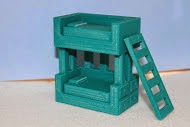For me, the first day of school often seems like a repeat of past years, with an opportunity to try new ideas and to improve on what I have done in the past; much like Phil Connors (Bill Murray) gets to do each same-day in the movie Groundhog Day. This year will be no different. I will wake up on the first day of school, with plans to improve my students understanding of Geometry, Calculus and Statistics. I will work hard to learn the best way to reach each of my students and hope to inspire their love of mathematics. Teaching is not always about the best lesson plans, it is about interactions between teachers and students. In the New York Times Opinion post by David L. Kirp, Teaching is not a Business, Mr. Kirp supports this idea, "All youngsters need to believe that they have a stake in the future, a goal worth striving for, if they’re going to make it in school. They need a champion, someone who believes in them, and that’s where teachers enter the picture. The most effective approaches foster bonds of caring between teachers and their students."
With all of this in mind, looking ahead, one addition to my lessons, that I hope will deepen student understanding and improve in class discussions is an online tool called LessonPaths that I will try this year. Lesson Paths is a free web-based site that allows me to create an online lesson in a slideshow format. I can upload a Power Point Presentation, link, video, document, create a quick-check quiz, or write an article on each slide. Many pre-made lessons have been made public so you can browse for a lesson you can use or from which you can gain ideas. There are some drawbacks to this tool, however. I have found that LessonPaths incorporates advertisements
 between slides in my lessons. While distracting, they are easy to skip over. I have created a few lessons that I plan to use as part the first homework assignment for my AP Statistics students in order to allow the class to focus on the skills of creating graphic displays and focus more on the analysis of the data during our class discussions. I am excited to see how this improves both graphing and analytical skills early in the year.
between slides in my lessons. While distracting, they are easy to skip over. I have created a few lessons that I plan to use as part the first homework assignment for my AP Statistics students in order to allow the class to focus on the skills of creating graphic displays and focus more on the analysis of the data during our class discussions. I am excited to see how this improves both graphing and analytical skills early in the year.




